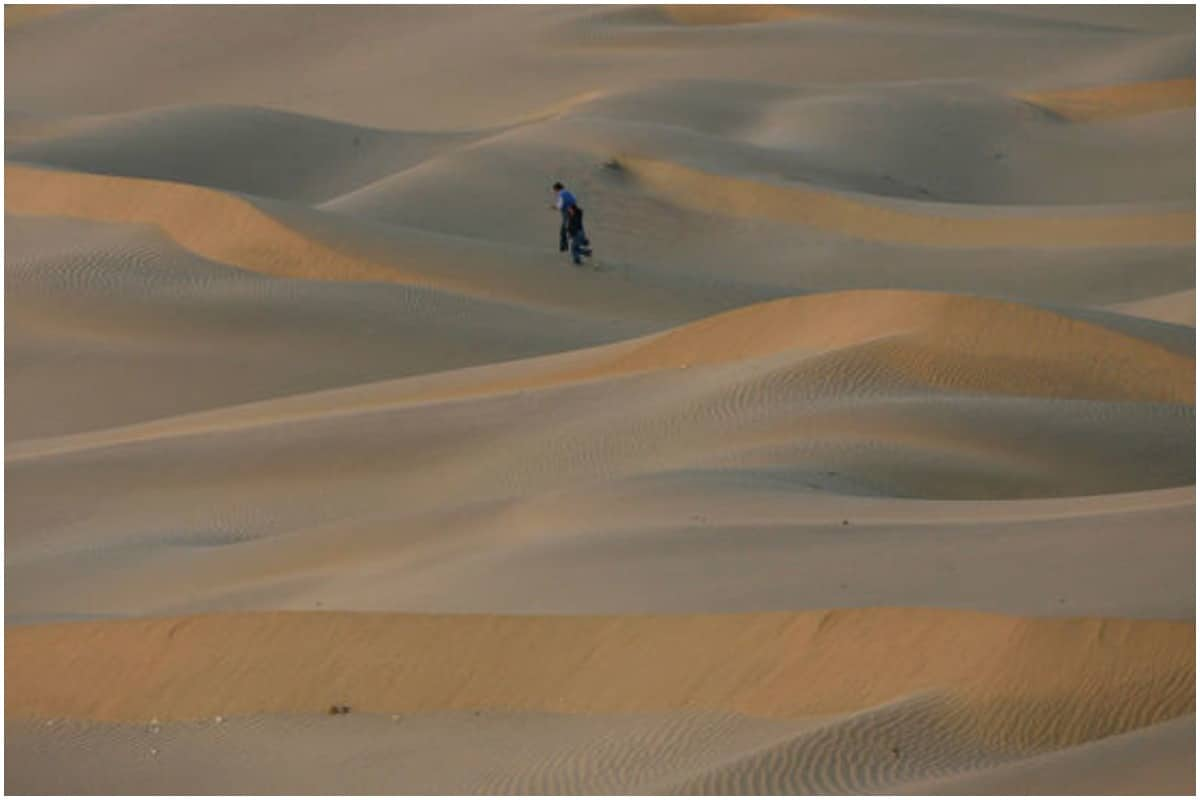
Researchers have found evidence of a “lost” river that passed through the central Thar desert, near Bikaner, 172,000 years ago, and may have been a lifeline for human populations that allowed them to inhabit the region.
The findings, published in the journal Quaternary Science Reviews, represent the oldest phase of river activity directly dated at Nal Quarry in the central Thar Desert.
Study by researchers from the Max Planck Institute for the Science of Human History in Germany, Anna University in Tamil Nadu, and IISER Kolkata indicates that Stone Age populations lived in a distinctly different Thar desert landscape than we found today.

This evidence indicates that a river flowed with phases of activity dating to approximately 172,000 years ago, near Bikaner, Rajasthan, which is more than 200 kilometers from the nearest modern river.
These findings predate evidence of activity in modern river courses through the Thar desert, as well as in the dry course of the Ghaggar-Hakra River, the researchers said.
The presence of a river running through the central Thar desert would have provided a lifeline for Paleolithic populations and potentially an important corridor for migrations, they said.

The researchers noted that the potential importance of the “lost” rivers to the early inhabitants of the Thar Desert has been overlooked.
“The Thar Desert has a rich prehistory, and we have been discovering a wide range of evidence showing how Stone Age populations not only survived but thrived in these semi-arid landscapes,” said Jimbob Blinkhorn of the Max Planck Institute for the Science of Human History.
“We know how important rivers can be to living in this region, but we have few details about what the river systems were like during key periods of prehistory,” Blinkhorn said.
Satellite imagery studies have shown a dense network of river channels running through the Thar Desert, according to the researchers.
“These studies can indicate where rivers and streams flowed in the past, but they cannot tell us when,” explained Professor Hema Achyuthan from Anna University.
“To prove the age of these channels, we had to find field evidence of river activity in the middle of the desert,” Achyuthan said.
The team studied a deep deposit of river sand and gravel, which had been exposed by quarrying activity near the town of Nal.
The researchers were able to document different phases of the river’s activity by studying the different deposits.
“We immediately saw evidence of a very active and substantial river system from the bottom of the river deposits, the power of which gradually diminished over time,” Achyuthan said.
The researchers used a method called luminescence dating to understand when the quartz grains were buried in the river sands.
The results indicated that the strongest river activity in Nal occurred roughly 172 to 140 thousand years ago, at a time when the monsoon was much weaker than it is today in the region.
River activity continued at the site between 95 and 78,000 years ago, after which only limited evidence of the presence of a river at the site, with evidence of a brief reactivation of the canal 26,000 years ago, the study found.
The river flowed at its strongest during a phase of weak monsoon activity in the region, and may have been a lifeline for human populations allowing them to inhabit the Thar Desert, the researchers said.
The period of time during which this river was active also overlaps with significant changes in human behavior in the region, which have been linked to the early expansions of Homo sapiens from Africa to India, they said.
“This river flowed in a critical time period for understanding human evolution in the Thar Desert, in South Asia and beyond,” Blinkhorn said.
“This suggests a landscape in which the first members of our own species, Homo sapiens, first encountered the monsoons and crossed the Thar desert may have been very different from the landscape we can see today,” he added.
.